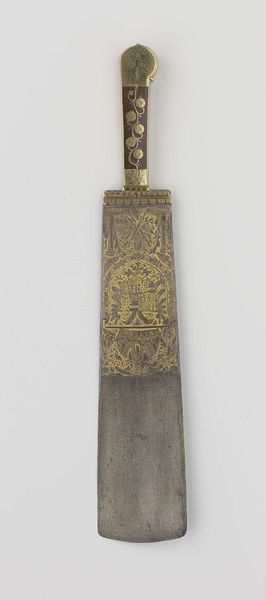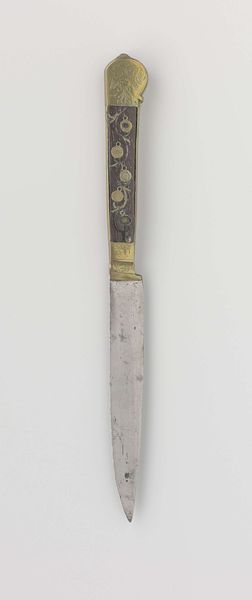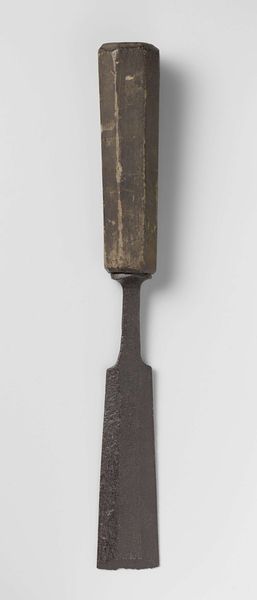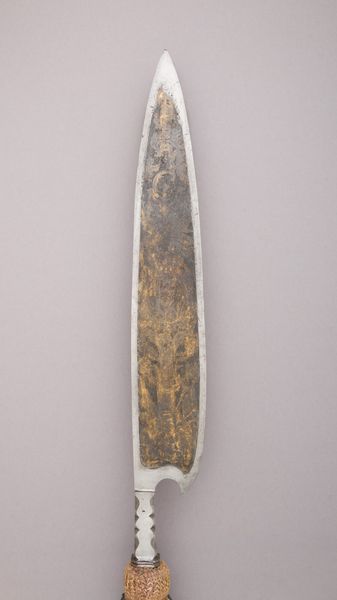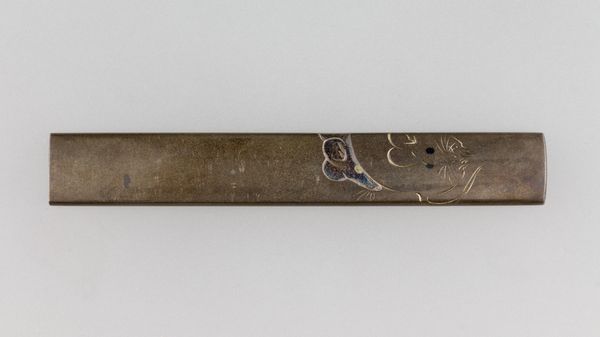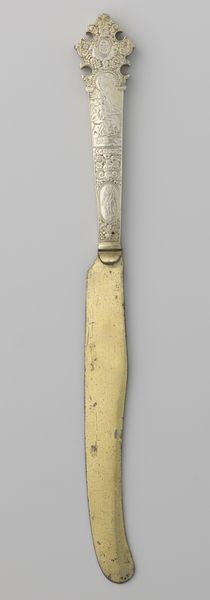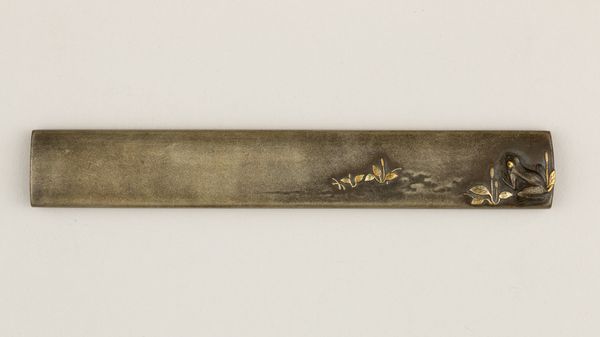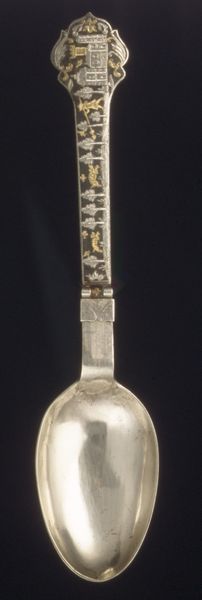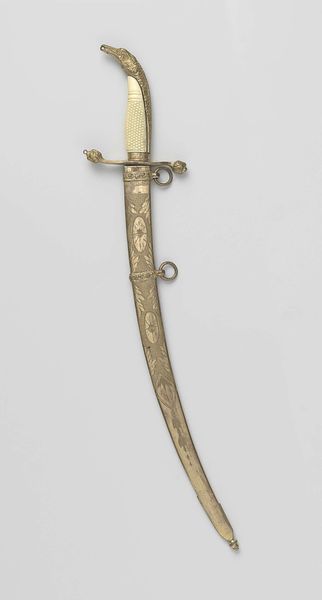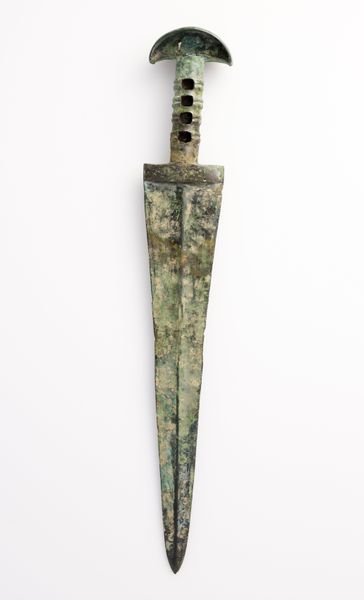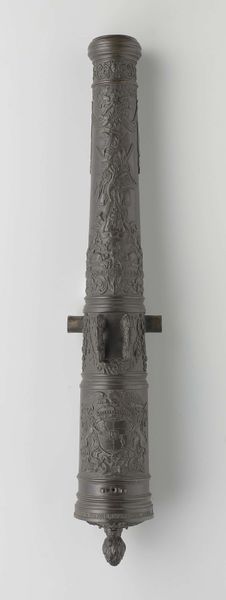
brass, carving, silver, metal, sculpture
#
brass
#
carving
#
silver
#
metal
#
sculpture
#
11_renaissance
#
sculpture
#
ceramic
#
decorative-art
Dimensions: length 44.2 cm, width 7.5 cm, thickness 1.7 cm
Copyright: Rijks Museum: Open Domain
Curator: At the Rijksmuseum, we have on display an ensemble of silverware dated 1532 that once belonged to Emperor Charles V, namely four knives and a fork. The material details speak of craftsmanship. I find them instantly striking, cold steel warmed by intricate silver and brass detailing. Editor: The weight of that history! Charles V was a ruler of vast territories, deeply involved in wars and political intrigues. These weren't mere eating implements; they symbolize power, status, and the social stratification of the 16th century. Curator: Precisely. And looking at their making, we can see an intriguing fusion of techniques. The carving in the handles—likely wood or bone overlaid with precious metals—represents artistry passed down through generations of artisans. There's a conscious display of wealth, but also labor and skill rendered invisible within it. Editor: What strikes me is the inscription on the knife blade – have you read that? Is it heraldic, familial? Can you read any hint of what the person who originally worked with these knives may have thought of him? Their practical function is now overshadowed; they're aesthetic objects divorced from any everyday function, yet still bound to a moment of production. Curator: Good point. As emblems of power, they participate in Renaissance ideals. The fork is of particular interest, representing evolving dining customs, perhaps highlighting Charles's embrace of courtly refinement. This is about so much more than just consuming food! What does it mean that those tools are now stripped of their usage and put into glass? Is that what we ultimately do with all things from the past? Editor: I see what you mean! The context surrounding them, how labor contributed to the final artwork, who used the piece...all relevant data points that can give way to insights as tangible and visceral as the metallic glint coming off this silverware. Curator: A fascinating example of material culture embedded with power dynamics, gender expectations and historical importance! Thanks for helping us view this in the way the history requires! Editor: Absolutely. Thank you, too, for adding the important lens of maker and class into my thinking. I will definitely chew on that for a while!
Comments
rijksmuseum about 2 years ago
⋮
Charles V acquired this portable cutlery set in Italy. The two large knives bear his arms and the chain of the Order of the Golden Fleece. Above this is the emperor’s crown and below it the Burgundian cross of Saint Andrew with the mythical pillars of Hercules (signifying the end of the world). They are all symbols of the emperor’s power.
Join the conversation
Join millions of artists and users on Artera today and experience the ultimate creative platform.
